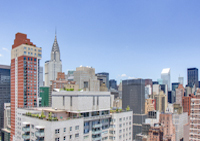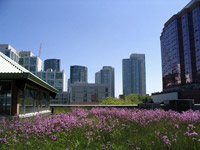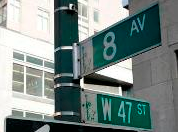The people have spoken, and their cries for New York City to “go green” have convinced lawmakers to finally measure the amount of energy consumption in commercial and city-owned buildings. Eventually, residential buildings will also be subject to this law, allowing prospective tenants an easier -- and more objective and valuable -- time in searching green apartment listings. All of which means that it’s nearly time for landlords to choose between going green… or simply going. According to Crain’s New York, which scathingly calls over-users “energy hogs,” New York City’s new program, aimed to measure the amount of energy consumed in nearly 25,000 commercial buildings, requires landlords to report their energy usage numbers. More specifically, it is targeting buildings larger than 50,000 square feet, mandating the submission of their most recent numbers focusing on the consumption of electricity, gas, oil and water. City-owned buildings are placed under even more stringent requirements, having to turn in reports for those that are 10,000 square feet or more.
The program, by publicly revealing these numbers en masse, hopes that owners of those buildings whose usage is exorbitantly high will be shamed into making necessary renovations in the name of both conservation and the desire to increase rentals and sales. Conversely, it benefits those buildings on the lower end of the consumption spectrum, whose landlords can use these results as a marketing tool. At the moment, it is unclear as to how many of these buildings have adhered to the new rules. Though the results were originally due last May, landlords were granted an extension due to some confusion over what was required of them. Their befuddlement has given rise to a new group of consultants, who have found a way to fill a niche and help owners comply with this new law. In fact, there are reports stating that they are charging $2,000 on average for their services.
Utility giant Consolidated Edison has also taken up the task of helping their customers with this issue. They are charging the bigger buildings a fee of $102.50 for these results, while smaller, one-meter buildings have the option to retrieve their data for free on the company’s website. Con Ed has reported that they have received 6,935 requests so far, and that number grows every day as the new extended deadline draws closer. Those that fail to report their usage data in a timely fashion will be fined $500 every quarter until they have remedied the situation. The penalty may not seem steep enough, but there is the added pressure on building owners who will in turn have to explain to prospective tenants why they have not complied. That being said, landlords are still hesitant to submit this information, which they argue is being computed by a ten-year-old formula created by the Environmental Protection Agency that does not include some of the more modern environmentally-friendly features.
Residential buildings, on the other hand, are not required to post their results until September 2013. While this may seem as if it is something residential landlords will not need to worry about until the distant future, logic dictates that the harsher the penalties on commercial buildings, the more likely it is that green apartment buildings will become the norm. Areas like Battery Park City, already renowned for its environmental initiatives (as we’ve illustrated in a previous blog post), may in fact see an increase in the construction of green apartment buildings within the neighborhood as a result of those searching for greener apartment listings. Few would take issue with the goal of this new law, aimed at the prevention of further environmental damage to New York City along with the hopefully systematic beautification of its streets and skies. This should, in turn, increase the construction of new green apartment buildings, as well as the renovation of other rental properties and apartments for rent. In other words, it looks like the Big Apple is poised to ripen into a new, deeper shade of green.





